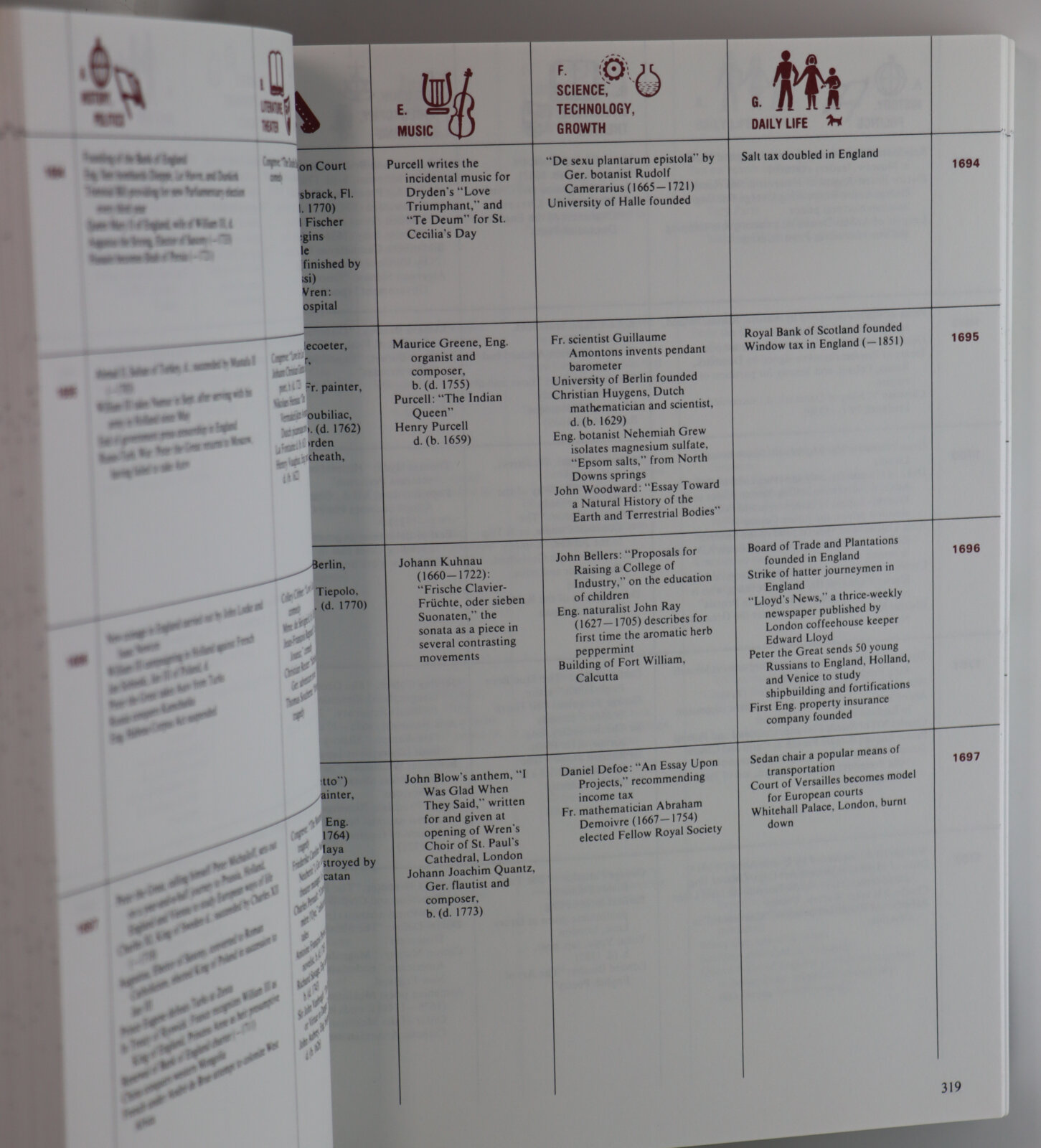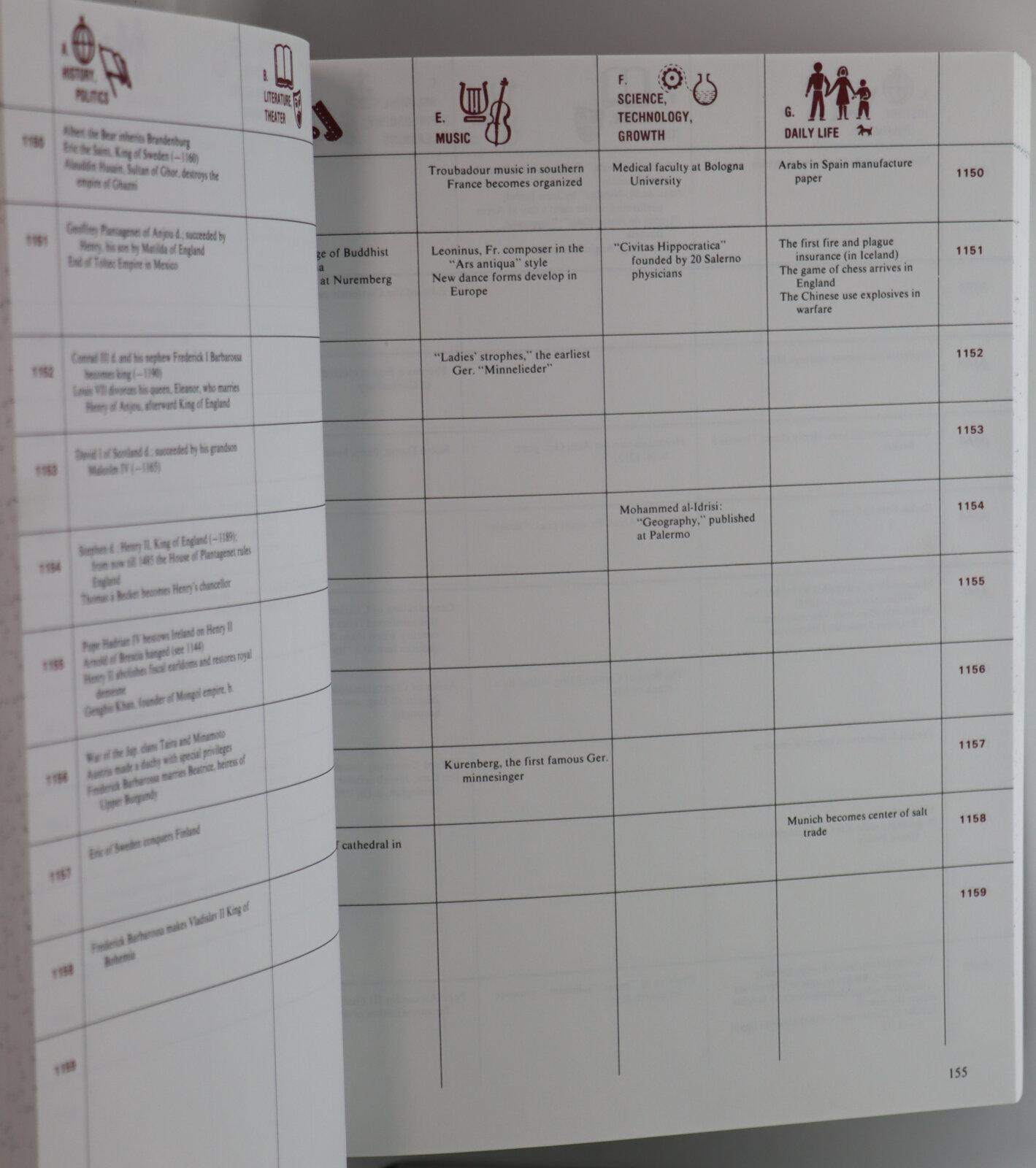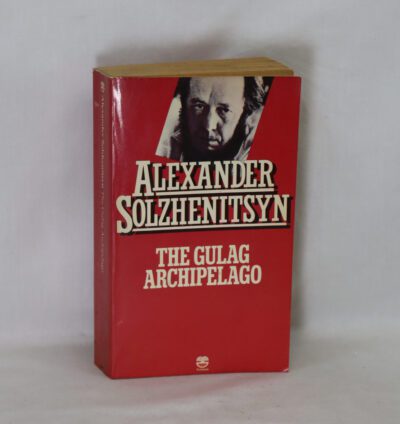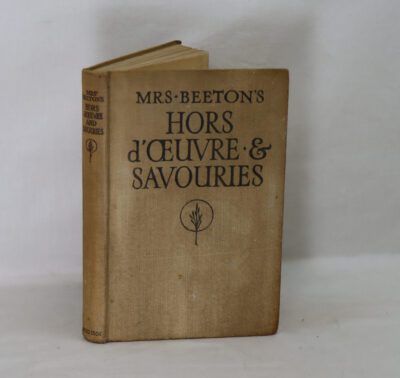The Timetables of History.
By Bernard Grun
ISBN: 9780671742713
Printed: 1975
Publisher: Simon & Schuster. London
| Dimensions | 22 × 28 × 5.5 cm |
|---|---|
| Language |
Language: English
Size (cminches): 22 x 28 x 5.5
Condition: As new (See explanation of ratings)
Item information
Description
Softback. Maroon glossy binding with white title and history images.
F.B.A. provides an in-depth photographic presentation of this item to stimulate your feeling and touch. More traditional book descriptions are immediately available.
A fantastic reference book.
The world-famous reference that tells who did what when from 4500 BC to the present day–now updated for the 21st century.
“A unique, encyclopedic book–rewarding, informative, entertaining.” —The Wall Street Journal
A vast and absorbing resource, the fourth edition of The Timetables of (TM)History spans millennia of human history. Unlike any other reference volume, this book gives a sweeping overview of the making of the contemporary world by mapping out at a glance what was happening simultaneously, from the dawn of history to the present day.
With nearly 100 pages of new material, including:
-Recent breakthroughs in science and technology
-New achievements in the visual arts and music
-Milestones in religion, philosophy, and learning
-The rise and fall of nations and the emergence of historical figures
-Landmarks in the drama of daily life around the world
Review: There’s been a long, steady shift from seeing history as about ‘battles and dates’ to exploring the cultures which informed the times. The Timetables of History goes right back to the opposite extreme — simple chronicling with virtually no explanation. In this way it follows in the footsteps of the Anglo-Saxon Chronicle, Quedlinburg Annals, and many of the other medieval and ancient chronicles of what happened when, linking events because they happened at the same time, even if there was no other connection.
The TimeTables of History goes one better than the early chronicles, in that it lays things out across the double page spread in columns of politics, art, science, etc, making it at least easier to find something if you know the approximate date and what kind of thing it was.
I can’t possibly fault this book in achieving what it sets out to do. Once you take away causality and analysis, you are left implicitly with a fairly random collection of what seemed important to the compiler. Some events and people — the Battle of Hastings, Leonardo da Vinci, Winston Churchill — are obviously mandatory, but others are more of a personal opinion. Indeed, some of the dates of things are somewhat of a personal opinion, since few ideas or inventions sprang into life fully formed in a particular year, and The Timetables is much too concise to give more than a single mention to all but the most major inventions and discoveries.
If you’re writing a historical novel or a history essay, or simply referencing the events of a particular year in your blog, this is invaluable for placing things which seem to be from different periods in their proper frame of reference. For example, few people are aware that Isaac Newton, who seems to us so thoroughly modern with his theory of gravitation and his calculus, was born the year after Galileo, who seems to us so medieval, being forced to recant his heretical notion that the earth went round the sun, died. But this is the kind of connection in time that this book makes so obvious.
At the same time, I wouldn’t want to claim more for this book than it really is. You need to know quite a lot of history, or at least be willing to look things up in other works, to make much sense of most of this. Likewise, although the book attempts to pin down some longer-term issues by assigning a particular key date to them, it does not give much in the way of trends.
Nonetheless, warmly recommended alternative reference, or simply for amusing browsing.
Want to know more about this item?
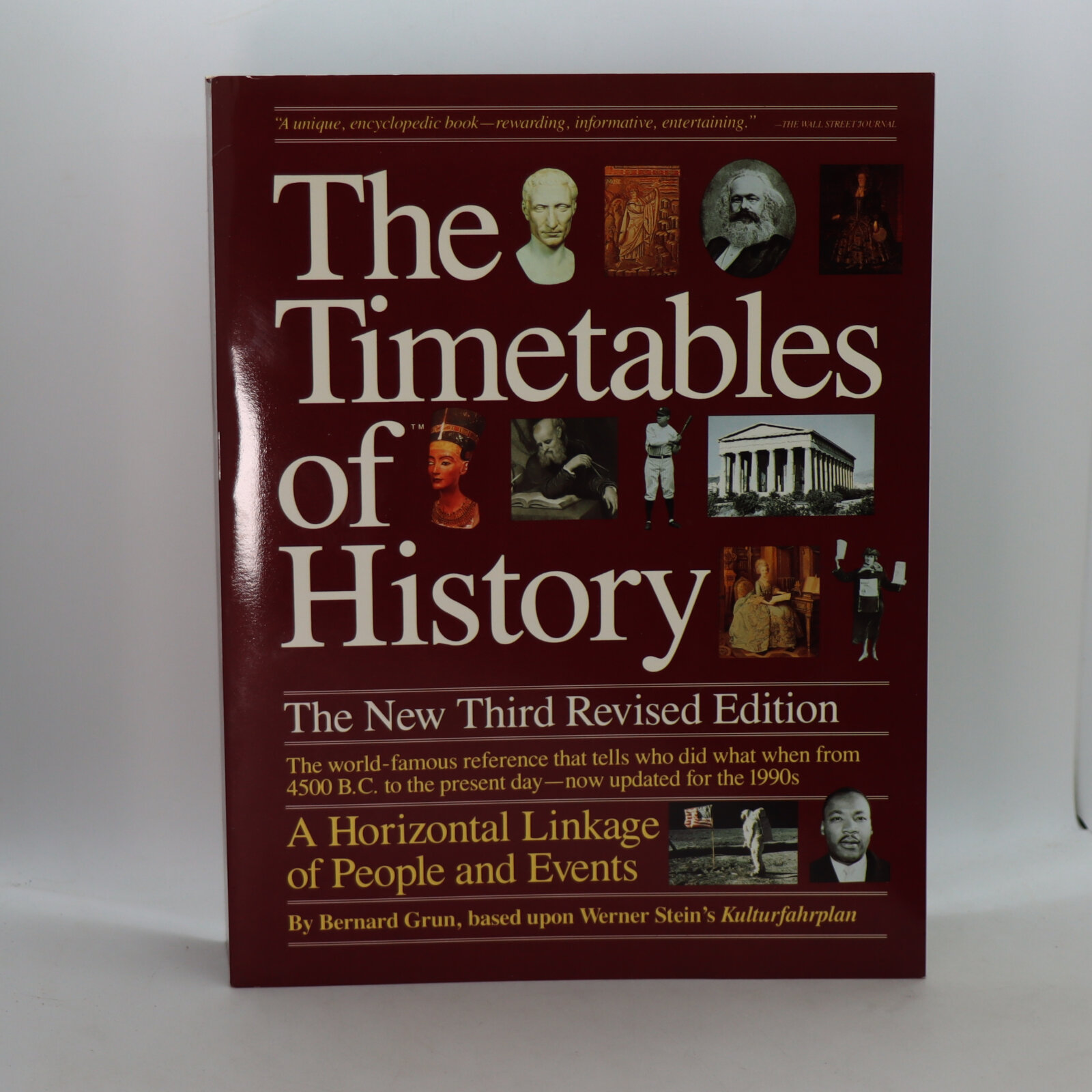
Related products
Share this Page with a friend

